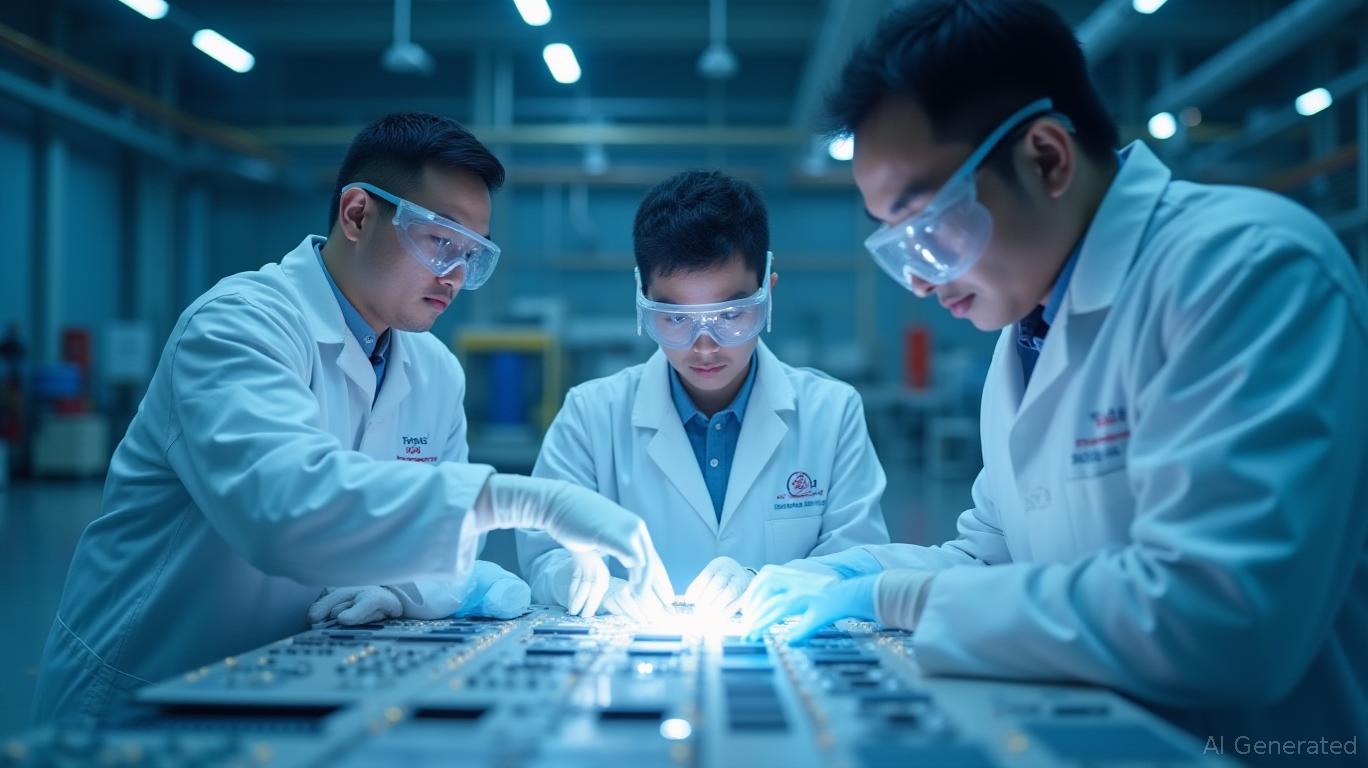TSMC's Strategic Dominance: Navigating Tariffs and Fueling the AI Revolution
In an era defined by geopolitical tension and exponential technological demand,
(TSM) stands as both a lightning rod and a beneficiary of global forces. While U.S.-imposed tariffs threaten its Taiwanese operations, the company's Arizona investments and AI-driven semiconductor demand have positioned it as a rare “win-win” play in the tech sector. This analysis dissects how TSMC is mitigating near-term risks while capitalizing on the AI boom—a combination that makes it a compelling buy for investors prioritizing resilience and growth.
The Tariff Hedge: Arizona as a Shield Against Trade Uncertainty
TSMC's $165 billion investment in Arizona—its largest overseas venture—serves as both a geopolitical buffer and a strategic lever. By producing 2-nanometer chips and advanced packaging in the U.S., TSMC secures tariff-free access to the American market while sidestepping the 32% reciprocal tariffs currently applied to Taiwanese exports.
Data: 30% of TSMC's 2nm capacity will originate from Arizona by 2030, shielding U.S. sales from Taiwanese tariff risks.
Critically, TSMC's Arizona fabs are not just about avoiding tariffs—they're a play to dominate the U.S. supply chain. The facilities will employ 20,000+ workers and generate $200 billion in indirect economic output, cementing TSMC's role as a cornerstone of American tech sovereignty. While Section 232 investigations loom, the company's proactive engagement with regulators—advocating for tariff exemptions and expanded CHIPS Act tax credits—suggests it will mitigate risks without sacrificing growth.
The AI Tailwind: A Demand Surge No Tariff Can Dampen
While tariffs create noise, TSMC's core business is being turbocharged by AI's insatiable appetite for advanced semiconductors. AI chips require 3nm/2nm nodes to balance power, performance, and cost—a niche where TSMC holds an unassailable lead.
Data: AI chip demand is projected to grow at 45% CAGR through 2025, with TSMC capturing over 60% of foundry-based AI orders.
The math is simple: every AI server, autonomous vehicle, and generative AI model needs TSMC's leading-edge nodes. Even if tariffs briefly disrupt margins, the long-term AI adoption curve ensures sustained demand. Consider NVIDIA's H100 chips—manufactured exclusively by TSMC—already backloged by hyperscalers and cloud providers racing to build AI infrastructure.
The Investment Thesis: Buy the Dip, Own the Future
TSMC's stock (TSM) has underperformed broader indices in 2025 amid tariff fears, but this presents a buying opportunity.
Data: TSM has underperformed the S&P 500 by 15% YTD, despite outpacing peers in advanced node revenue growth.
Why Invest Now?
1. Geopolitical Hedge: Arizona's tariff-free production insulates U.S. revenue from Taiwanese trade wars.
2. AI Monopoly: TSMC's 3nm/2nm lead ensures it captures the lion's share of AI chip demand.
3. Valuation Reset: At 15x forward earnings, TSM trades at a 30% discount to its 5-year average despite record R&D spend and AI traction.
Risks? Yes—but Overblown
Bear arguments center on tariffs, oversupply, and geopolitical uncertainty. Yet TSMC's diversified customer base (Apple, AMD, Alphabet) and 50%+ operating margins leave ample room to absorb near-term headwinds. Meanwhile, the CHIPS Act's tax credits and TSMC's R&D investments ($20 billion annually) ensure its technical edge remains unchallenged.
Data: R&D spend has grown from 6% to 9% of revenue since 2018, fueling its 2nm leadership.
Conclusion: TSMC Is the Tech Sector's “Buy and Hold” Play
Tariffs are a speed bump, not a roadblock. AI is a multi-decade megatrend, and TSMC is its indispensable enabler. With Arizona solidifying its U.S. footprint and AI demand soaring, the stock offers asymmetric upside. Investors should treat dips as buying opportunities—because when it comes to semiconductors, TSMC is the only game in town that truly matters.
Data: AI-related revenue could hit $25 billion annually by 2027, or ~25% of total TSMC revenue.
Act Now: TSMC's combination of defensive positioning and explosive growth drivers makes it a once-in-a-decade investment. The world needs its chips to power the AI future—and so should you.

Comments
No comments yet